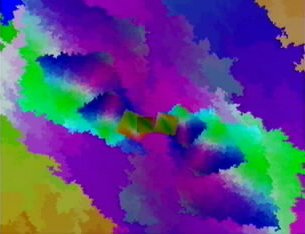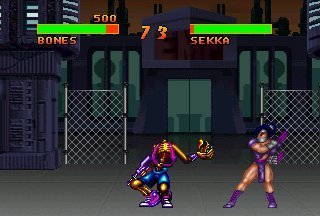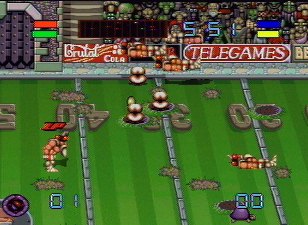 |
 |
Atari Jaguar 64-bit |
The Jaguar includes such technical features as morphing, transparency, lighting and shading, unlimited sprites, 32-bit color, and the ability to render 850 million pixels per second. The Jaguar comes with one 17-button controller, TV hookups, power supply, and the game, Cybermorph.
In comparison to other game systems of the day, the Jaguar falls somewhere between the Super Nintendo and 3DO. However debate continues whether the Jaguar was more or less powerful than the 3DO. In addition, because the Jaguar wasn't designed to push polygons as the PlayStation was, many continue to believe it couldn't keep up, even though the specifications are similar. In fact, John Carmack (author of Doom) claims "If the Jaguar had dumped the 68k and offered a dynamic cache on the risc processors and had a tiny bit of buffering on the blitter, it could have put up a reasonable fight against Sony."
Some of the best Jaguar games include: Tempest 2000, BattleMorph(CD), Iron Soldier, Alien vs. Predator, Rayman, BattleSphere, NBA Jam TE, Doom, and Protector.
The Jaguar was Atari's last home video game system.
Here are some games that don't get much attention. Good, bad, or otherwise.
 VLM |
 Vid Grid |
|
 Double Dragon V |
 Brutal Sports Football |
 Cannon Fodder |
Atari Jaguar Specs
Processors:
Tom: Graphics Processor (32-bit RISC @ 26 MHz), Object (64-bit RISC @ 26 Mhz), Blitter (64-bit RISC @ 26 Mhz)
Jerry: Digital Signal Processor (32-bit @ 26 MHz)
Motorola 68000 (16-bit @ 13 MHz)
Sound: 16-bit stereo
Resolution: Variable (Typical was 320x240, but it can go up to 800 pixels per scanline.)
Colors: 16 million
Memory: 2 megabytes (16 megabit), cartridges up to 6 megabytes
Original 1994 price: $249.95
Original 1995 Jaguar CD price: $149
Special Features: Hardware scrolling & rotation, texture mapping, transparency, Gourard shading, morphing, 10,000+ polys per second